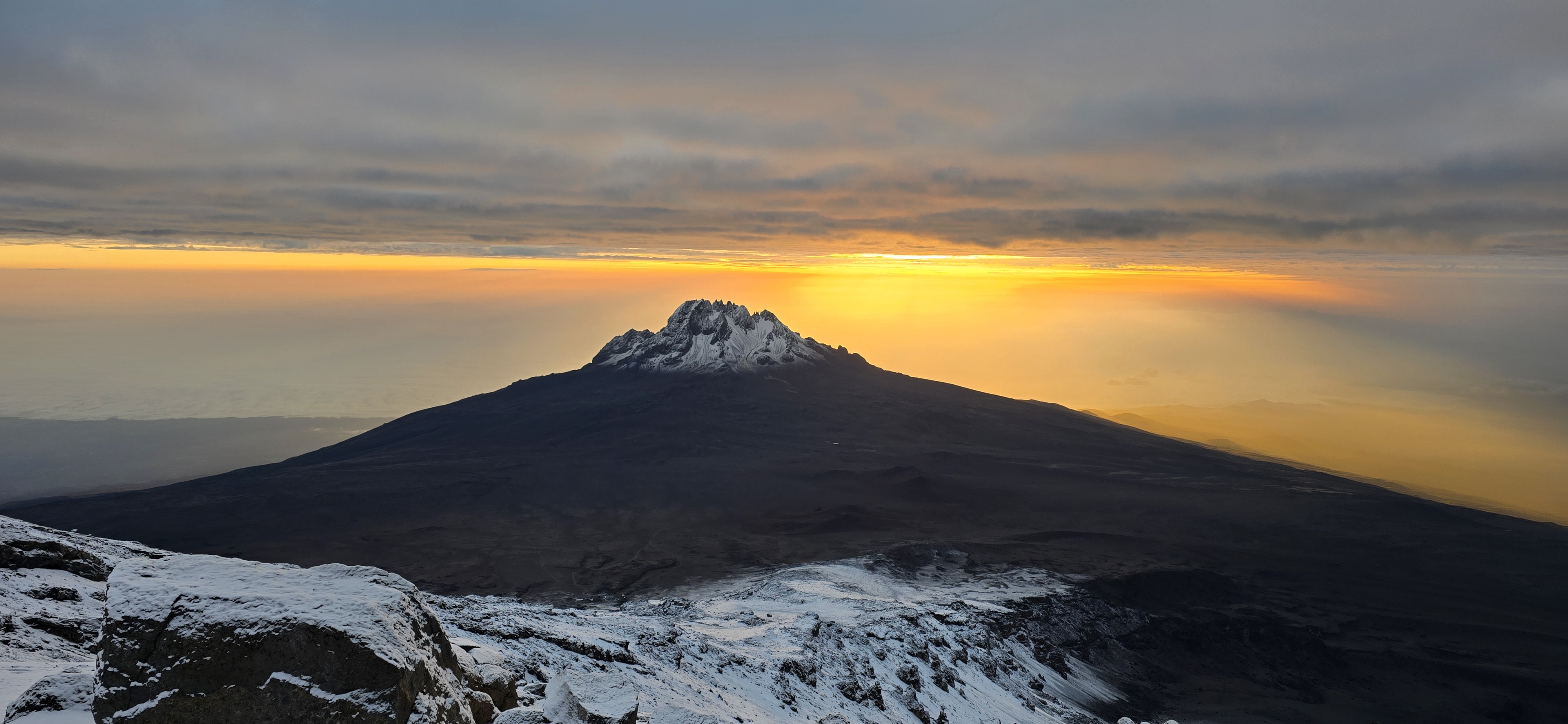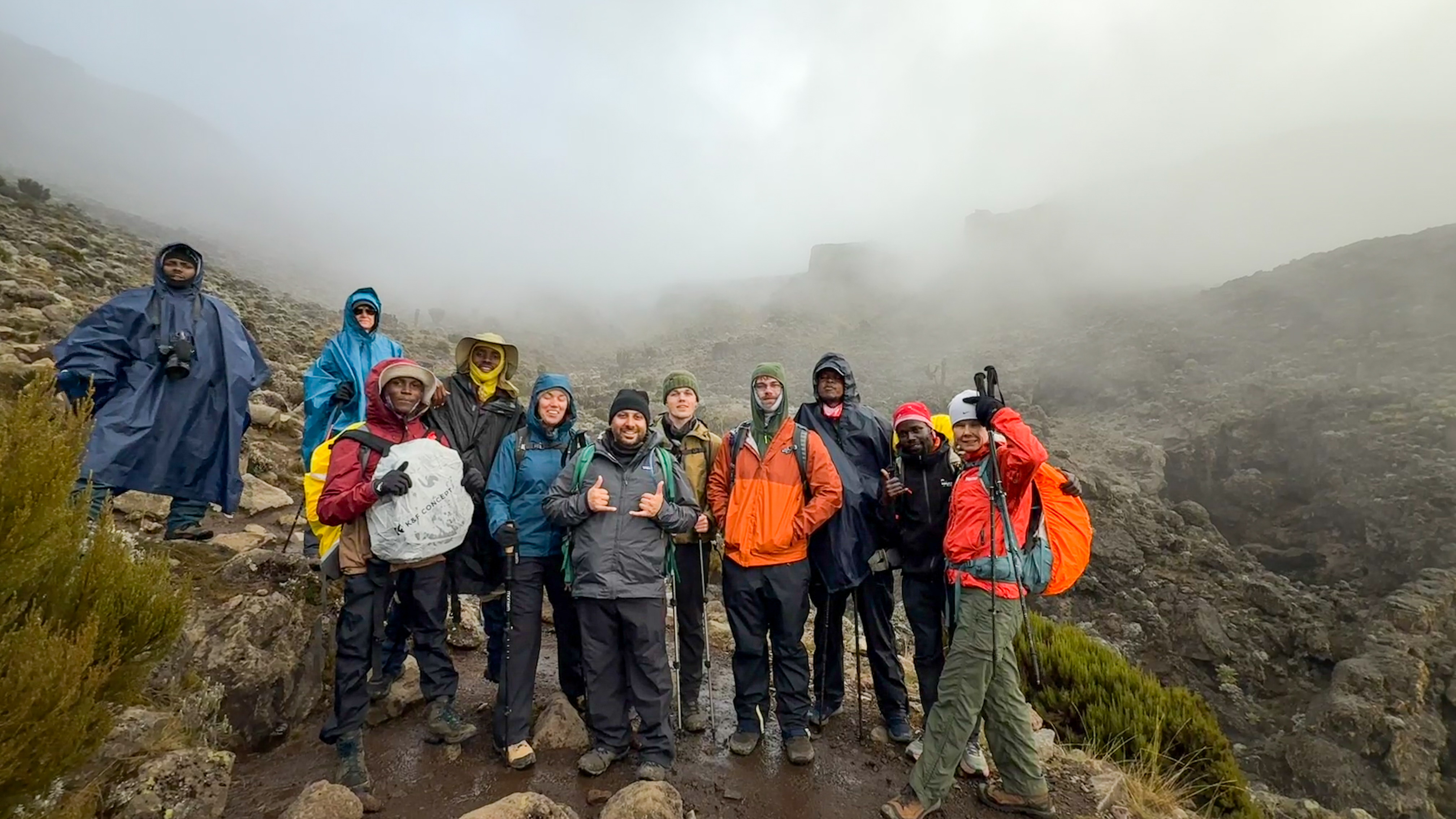
Standing at 19,341 feet, Tanzania’s Mt. Kilimanjaro is the world’s tallest freestanding mountain.
Videos by TravelAwaits
For context, the world’s tallest building is Dubai’s famous Burj Khalifa. The Burj Khalifa rises over 2,717 feet… which means you would need to stack seven Burj Khalifas on top of one another to compare to Mt. Kilimanjaro.
Think of it this way: when domestic jets travel between nearby cities, they rarely climb above 19,000 feet.
So, if you’ve summited Mt. Kilimanjaro, you’ve hiked more than seven Burj Khalifa’s to reach commercial airline heights.
Summiting Kilimanjaro is more accessible than you think
That probably doesn’t sound like an adventure for the faint of heart—and it isn’t. But one of my best friends just accomplished the feat with only 35 days of prep time and no background in mountaineering.
That’s pretty damn incredible, so I wanted to share his story with any other travelers who have dreamed of summiting Mt. Kilimanjaro but aren’t sure how to get started undertaking such a colossal task. Consider this your look behind the curtain.
Was his journey easy? No.
Did it get actively messy at times? Yes.
Does he wish he would have had a love affair with a Stair Master beforehand? I’m quoting him on that.
If you’ve ever wondered what it’s like to travel across the world to accomplish one of the greatest feats on Planet Earth, you might want to look at what the experts have to say—but I think you should also know what it’s like for an average traveler.
Here’s your crash course on what it’s like to plan a trip to summit the mountain, get to Tanzania, reach the Roof of Africa, and make it back home in one piece.
Meet Cody Decker, personal trainer & breathwork coach

Cody Decker is a certified personal trainer, breathwork coach, and contrast therapy guide. He works as a personal trainer, breathwork facilitator, and contrast therapy guide in St. Louis, Missouri.
If you’ve ever seen people plunging into half-frozen lakes and tubs of ice water, that’s part of contrast therapy. (The other part is heading straight into a sauna after.)
Cody lives in Saint Louis, Missouri where he works at Edge Fitness and Breath & Exposure STL. His professional experience gave him a huge leg up in Tanzania—still, his journey probably doesn’t look exactly how you’d imagine.
Here’s how the average traveler ends up summiting Kilimanjaro.
Cody learned about the trip on Facebook—and joined only 35 days out

In December 2024, Cody saw a Facebook post from a friend who works at a non-profit called Accelerate Change. After his father’s unexpected death, this friend decided to summit Mt. Kilimanjaro once and for all. It was something he and his father had dreamed of doing but ran out of time, unfortunately.
Inspired by undertaking that journey once and for all, this friend shared his plans to summit the mountain—and also encouraged others to spend time with loved ones. After all, we never know how much time we’ll have left with them.
Cody resonated with the message and shared the post, hoping to attract a few donations for Accelerate Change’s trip to Mt. Kilimanjaro.
Shortly after, Accelerate Change’s leader reached out to invite Cody on the trip. With two international adventure trips under his belt (a sacred site journey across Peru and a romp around the jungles of Panama), Cody knew it was time for another adventure.
This time around, he was off to Africa.
So, how did Cody get in shape in time for the trip?

With only 35 days to prepare for Accelerate Change’s trip to Tanzania, Cody knew he was in for a tough challenge. To get in shape, he trained his lungs with breathwork (an important factor for anyone heading to low-oxygen altitudes) and used a Breather Fit device to train his respiratory muscles.
And that was about it.
He didn’t learn about mountaineering. In fact, Cody hasn’t climbed any other mountains. (We’re from Missouri—it’s mostly flat.) He didn’t do any cardio to prepare. I told you—this isn’t the average Mt. Kilimanjaro story.
As Cody puts it, “It’s nice to know my baseline fitness is Mt. Kilimanjaro.”
(Don’t worry—we’ll get to all the things he wishes he’d done differently below. And, yes, cardio is one of them.)
What about budgeting for summiting Mt. Kilimanjaro—was it a pricey trip?

Cody wasn’t responsible for planning the entire journey to Mt. Kilimanjaro because he joined Accelerate Change’s trip. Their crew had already booked the trip with a travel company, which arranged all those added details like porters, cooks, camp setups, and medical equipment like oxygen tanks.
The vast majority of people who summit the mountain rely on highly trained teams that work around the clock to make the journey possible. And these crews come in all shapes and sizes for all different budgets.
Cody spent a lot more money than he thought he would because his crew went with the top rated travel company and the most expensive Mt. Kilimanjaro package. (They took the Lemosho route, known for being the most beautiful.)
This elaborate package ensured the climbing team had added luxuries like more comfortable toilets and oxygen masks at the ready. On top of that, Accelerate Change had a camera crew following the journey, which required extra budgeting. Their focus was on leading breathwork exercises throughout the summit.
Another major cost was equipment; Cody opted to buy his mountaineering equipment rather than rent it. With plans to summit Denali in 2026, that decision made sense for him—but it’s not necessary for everybody. You can save big by renting.
Lastly, transportation. Though Cody found the flights to be less expensive than anticipated (around $1,300 from Saint Louis, Missouri), the whole journey was a lot more costly than he originally thought.
His advice: You can save a lot by booking a less comprehensive package with fewer creature comforts, renting equipment rather than buying, and booking flights as early as possible.
His summit experience took almost 12 hours

Cody summited Mt. Kilimanjaro with a crew of climbers aged 18-55. I was pretty floored to learn that it took five and a half days to summit the mountain, and then almost two to climb back down.
On the actual day of the summit, the crew woke up at 11 pm to start hiking at 11:50 pm and didn’t reach the peak until 8:50 am.
That’s a solid 12-hour hike. And Cody says about seven hours of that total time is spent taking tiny baby steps up the steepest ascent. (9 hours up and 5 hours back down)
At the peak, he could barely stand or breathe. He almost took oxygen near the summit, but when the guide said there was only 6 minutes to summit, he chose to see if he could complete the hike without it. He did.
He says he didn’t accept oxygen because no one else on his crew did—and he didn’t want to be the only one. In fact, Cody says that it was his dedication to all those who had helped donate to his trip and encouraged him to succeed that helped him finish the summit.
Using his hiking sticks for support, Cody propped himself up on the tallest freestanding mountain in the world, put on the biggest smile he could muster, and posed for the picture of a lifetime.
Next time, he’d prepare more using a Stair Master and an oxygen mask

Cody’s biggest piece of advice for anyone who wants to summit Kilimanjaro: have a love affair with a Stair Master. To succeed and feel good, invest in cardio—and a Hypoxic Mask. He wishes he would have trained using an oxygen mask to train his body for low oxygen levels.
Aside from added training, Cody also wishes he would have booked his trip earlier. Arriving in Tanzania a week or so before the trip would have given his body more time to acclimate to the time change, diet, and more.
He also advises booking the trip out earlier than 35 days. This opportunity came up quickly for Cody, and he has no regrets about going—but he would have had a smoother trip if he had had more time to prepare physically and financially.
In summary…
Here’s my TL;DR advice for anyone who wants to summit Mt. Kilimanjaro but doesn’t have a lot of experience traveling or physically training:
- You can save money by renting equipment rather than buying, opting for a more affordable but less comfortable travel company, and joining an existing summit crew
- You need to train the body in terms of cardio and low oxygen levels
- But don’t forget about the mind; Cody’s background in breathwork and contrast therapy gave him a leg up in terms of mental fortitude and clarity
- Give yourself time to adjust to life in Tanzania before going on the journey—Cody recommends between three to seven days
